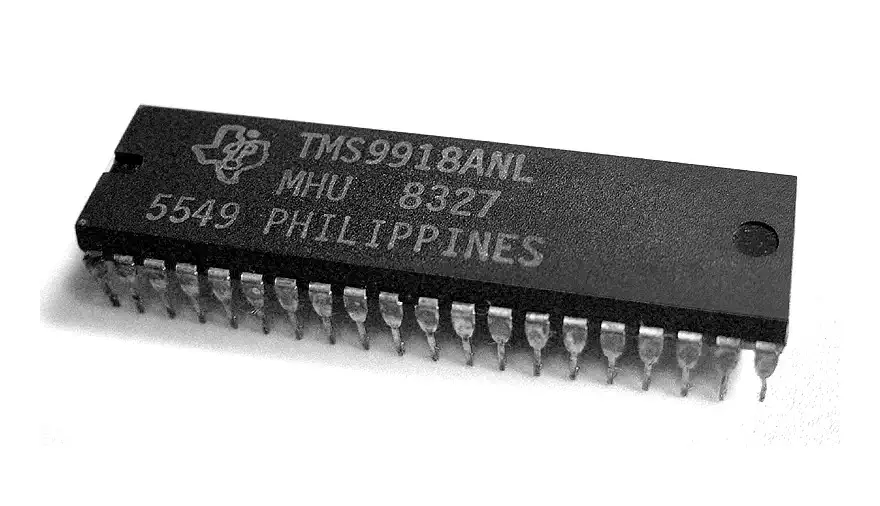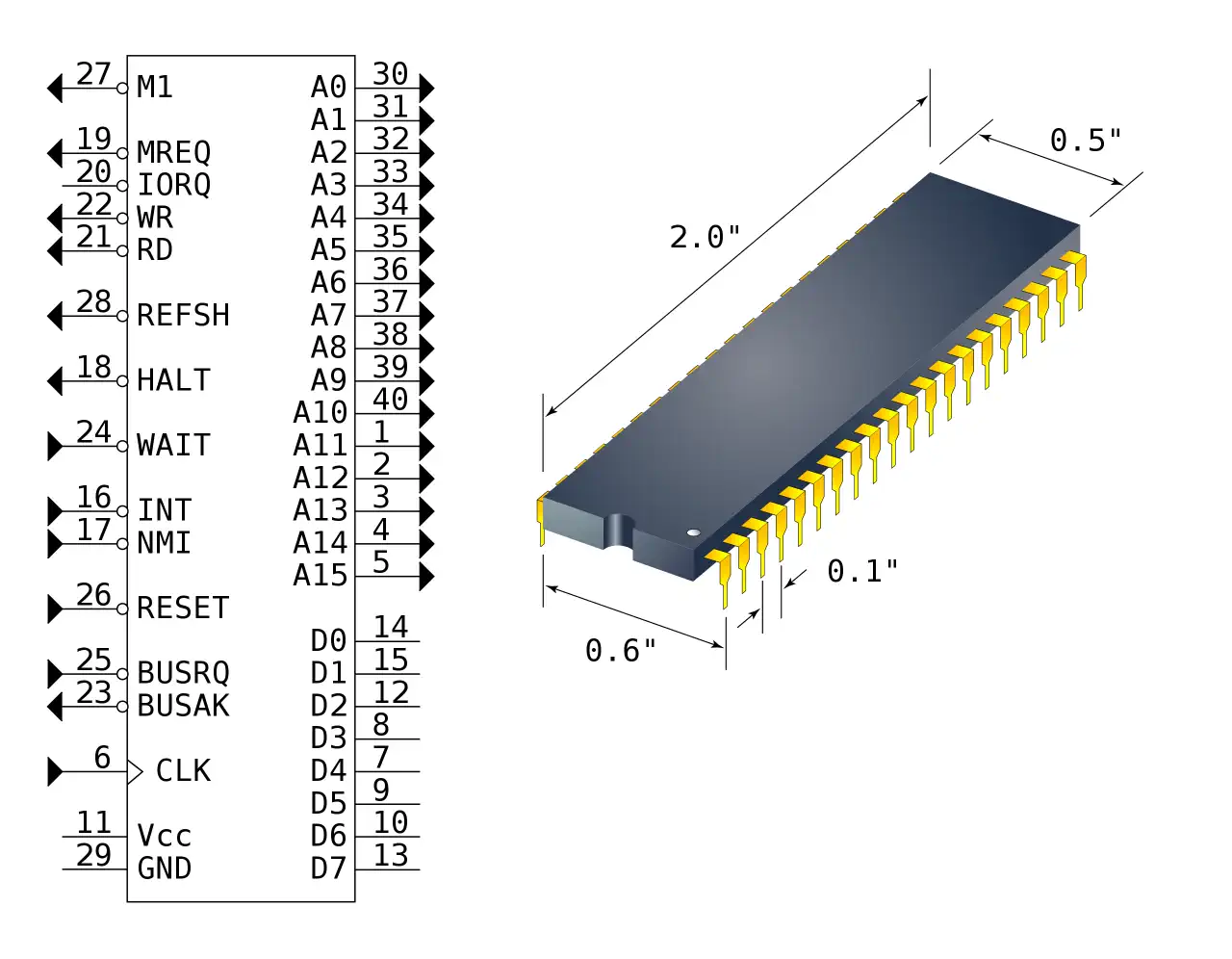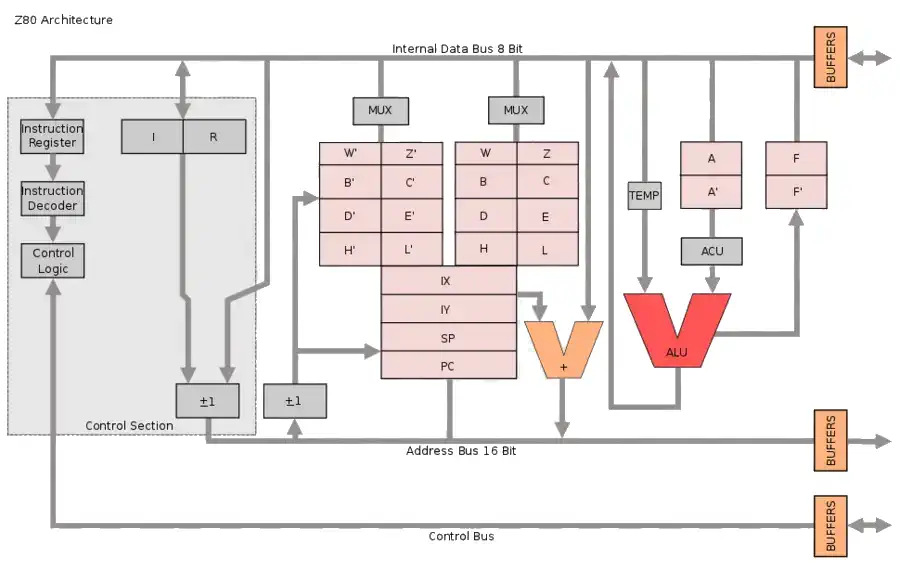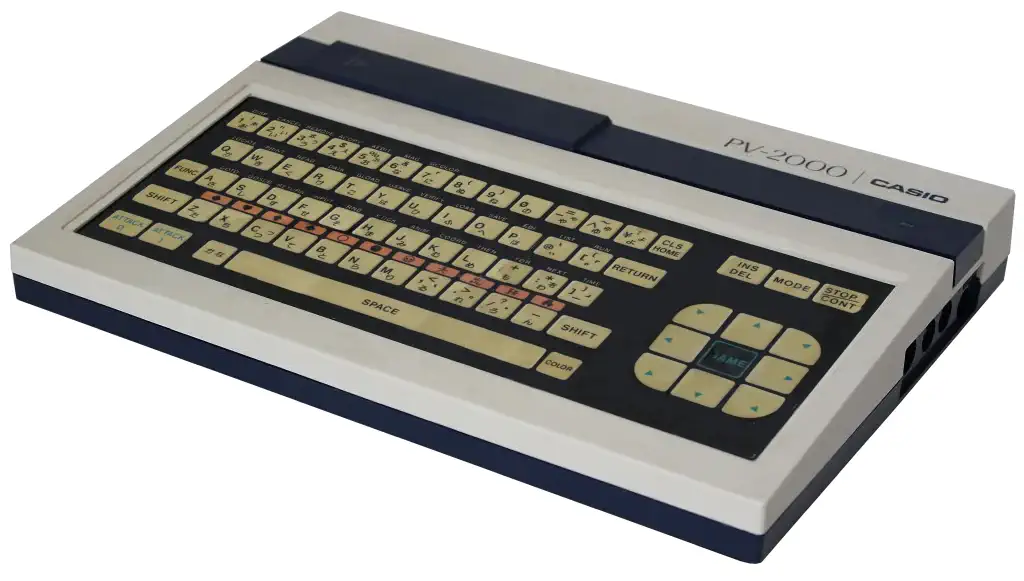Casio PV-2000 (not quite) MSX Computer
The Casio PV-2000 is the successor of the PV-1000, but with a different architecture. The sound chip has changed, and the Video RAM has been increased to 4K from 1K in the PV-1000. The system is very close to the MSX1 standard, and the successors to the PV-2000 implemented the standard fully.
The PV-2000 was a cartridge based system, but only 11 cartridges were released for it, some of the games are:
- Pac&Pal
- Rock'n Rope
- Pooyan
- Galaga
- Super Cobra
The keyboard that was implemented is of poor quality, it uses a flat plastic membrane that over time just crumbles, rendering the keyboard useless. Not many PV-2000 computers were produced, and few survived intact.
TMS9918 Series Video Display Processor (99n8, 99n9, 91n8, 91n9)
The TMS9918 is a series of video display controllers (VDC) manufactured in 1979 by Texas Instruments, also refered to as 'Video Display Processor' (VDP). The TMS9918 and its variants were used in the ColecoVision, CreatiVision, Memotech MTX, MSX, NABU Personal Computer, SG-1000/SC-3000, Spectravideo SV-318, Spectravideo SV-328, Sord M5, Tatung Einstein, Texas Instruments TI-99/4, Casio PV-2000, Coleco Adam, Hanimex Pencil II, and Tomy Tutor.
Key Features:
- 256x192 pattern based color pixels per screen
- 16 different colors
- 8-bit memory mapped CPU interface
- No need for DMA, CPU can access VRAM
- 32 single color Sprites per screen (4 per scanline)
Variants:
- TMS9918A - 60Hz output, NTSC video
- TMS9928A - 60Hz output, YPbPr video
- TMS9929A - 50Hz output, YPbPr video
- TMS9118 - Different RAM than TMS9918A, otherwise identical
- TMS9128 - Different RAM than TMS9928A, otherwise identical
- TMS9129 - Different RAM than TMS9929A, otherwise identical

CPU View - Zilog Z80 Family
The Z80 quickly became popular in the personal computer market, with many early personal computers, such as the TRS-80 and Sinclair ZX80, using the Z80 as their central processing unit (CPU). It was also widely used in home computers, such as the MSX range, SORD, and the Amstrad CPC, as well as in many arcade games. Additionally, it was also used in other applications such as industrial control systems, and embedded systems. The Z80 was widely used until the mid-1980s, when it was gradually replaced by newer microprocessors such as the Intel 80286 and the Motorola 68000.
The Z80 microprocessor was developed by Zilog, a company founded by Federico Faggin in 1974. The Z80 was released in July 1976, as a successor to the Intel 8080. It was designed to be fully compatible with the 8080, but also included new features such as an improved instruction set, more powerful interrupts, and a more sophisticated memory management system.
The Z80 quickly became popular in the personal computer


VRAM: 4kB Sound Chip TI SN76489AN Sound 3 sound channels + 1 noise Display Chip TMS9918 VDP Display 256x192 in 8 colors Best Color 8 colors Graphics 256x192 in 16 colors Sprites 1 color, 16x16, 4/scanline, 32 total System OS Proprietary (MSX1 like) Storage ROM Cartridge, Casio FA-30 tape device Original Price ¥29,800

